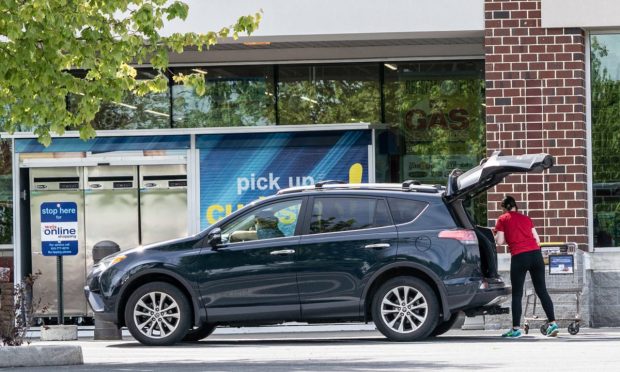Inventory Data a Weak Link in Omnichannel Retail, BOPIS Efforts

Despite all the growth of omnichannel retail, the inventory data needed to satisfy BOPIS demand is still behind.
Among those pressures: Having the right inventory in place, and having the right tech stack in place to track that inventory and update the information in real time for consumers.
BOPIS, or buy online, pick up in-store, is gaining attention and demand from consumers. As noted in this space earlier in the month, retailers across a number of verticals are expanding their in-store fulfillment options to accommodate changing shopping patterns. PYMNTS’ research into the holiday shopping season has found that in-store pickup was used by 25% of consumers, close to twice the levels reached last year.
Business models are changing to meet consumers where they want to be met. Beginning this month, Walgreen is extending its same-day delivery service to fulfill orders 24/7 at about 400 of its 24-hour stores. The announcement came on the heels of an October rollout of a guaranteed 30-minute pickup option for Walgreens customers.
The initiatives are just among the latest examples of how the connected economy is taking shape, where digital conduits lead to physical ones, and vice versa. But inventory lies at the center of it all, and stockouts can stymie omnichannel efforts.
There are some indications of turbulence where supply meets demand — and where health care, again, is a prime example. News came this week that CVS and Walgreens are limiting the amount of child pain medication that customers can buy, both online and in stores, as the “tripledemic” of COVID-19, RSV and the flu emerges.
Matching Expectations to Reality
In a bit of anecdotal evidence as to what happens when data does not match up with reality: One of the PYMNTS team recounted how she had gone online to a major pharmacy’s site to fill her basket with items that were ostensibly in stock — and upon checkout found that only a third of the order could be filled in for a BOPIS interaction.
The rest of that order? Well, that got filled by Amazon within a day — which indicates that the impact of less-than-efficient data presented to consumers winds up steering sales to competitors. The inventory management platform matters, and sometimes the inventory management tech is lacking, particularly if it’s built in house.
There’s recognition of the pressure. In the PYMNTS report “Big Retail’s Innovation Mandate: Convenience and Personalization,” done in collaboration with ACI Worldwide and based on surveys of 300 large U.S. and U.K. retailers, the digital tools being examined by retailers and expected by consumers include automatic real-time inventory checks. That feature allows consumers to view in-store inventory — before they come into the store or as they browse through the physical channels — which would address the pain points of stockouts, BOPIS and curbside delivery options.
Sixty-eight percent of automotive merchants, 61% of grocery merchants, 50% of general retailers and 42% of convenience stores and pharmacies plan to offer that innovation, if they haven’t done so already.
Time is of the essence. Elsewhere, and in a broader signal of supply chain pressures, the Federal Reserve noted through its Global Supply Chain Pressure Index that pressures increased “moderately” in November. It’s not a clanging alarm, but something to monitor as we move through the rest of the holiday season and into a new year.
